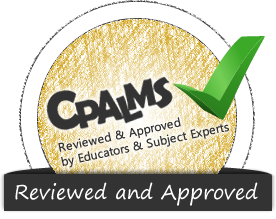Please sign in to access this resource
Not a Florida public school educator?
Access this resourceon CPALMS.com
General Information
Freely Available: Yes
Aligned Standards
This vetted resource aligns to concepts or skills in these benchmarks.8 Lesson Plans
In this lesson, students analyze a variety of primary and secondary sources in an effort to answer the central historical question: Why did the Founding Fathers keep slavery in the Constitution? Students first read Thomas Jefferson's original (deleted) anti-slavery grievance from the Declaration of Independence. Students are then given brief statements from 4 different Founders (Benjamin Franklin among them). These are followed by paragraph-length analyses from 3 historians who comment from a historical distance on the Founders' unwillingness or inability to eliminate slavery. The lesson ends with a "debrief" class discussion.
In this lesson, students study the origins of the American Revolution and the colonial protests against the Stamp Act in an effort to answer the central historical question: Why were colonists upset about the Stamp Act? Students will read three primary source documents:
- a short piece form the Boston-Gazette urging protest,
- a letter from an English newspaper expressing bafflement over the protests, and
- a letter from tax collector John Hughes complaining of his ill-treatment and blaming it on the Presbyterians.
Following the teacher's model, students answer sourcing and contextualization questions for the first two documents and do the last on their own. Discussion questions which corroborate all three documents conclude the lesson.
In this lesson, students study primary and secondary sources in an effort to answer the central historical question: Why did the Founders write the Declaration of Independence? Students will examine contrasting views by two historians. Then they will read the preamble of the Declaration (2 versions of varying reading complexity are provided) and rewrite it in their own words. Students will also examine a simplified list of the grievances against King George specified in the Declaration. Finally, students and teacher attempt to answer the central question and determine which featured historian has the better argument.
In this lesson, students analyze two primary sources in an effort to answer the central historical question: What type of government did Federalists and Anti-Federalists prefer? The lesson begins with a mini-lesson introducing historical context for the Constitutional Convention, the Great Compromise over Representation, and the ratification process. Students then analyze, with the aid of a graphic organizer, two documents: one by an Anti-Federalist (Melancton Smith) and one by a Federalist (Alexander Hamilton). Students discuss as a class the two positions and their modern-day implications.
In this lesson, students study the Great Awakening and one of its most notable preachers, George Whitefield, in an effort to answer the central historical question: Why was George Whitefield so popular? After viewing an online film clip and a brief PowerPoint to establish context for the Great Awakening and some of its "superstar" preachers, students are presented with three primary sources regarding Whitefield:
- a long-after-the-fact anecdote by Benjamin Franklin,
- a contemporary (but undated) account by a born-again Whitefield follower Nathan Cole, and
- a hostile and dismissive letter by a rival preacher, Nathanael Henchman.
For each, students answer sourcing and contextualization questions and formulate a hypothesis as to Whitefield's popularity. A culminating class discussion addresses the central question.
In this lesson, students analyze two primary source documents in an effort to answer the central historical question: What were the differences between [Alexander] Hamilton and [Thomas] Jefferson? Students first read a textbook summary/description (not included) of the Hamilton/Jefferson dynamic. Then, students are given a letter by each man—both addressed to George Washington and written on the same day—each of which addresses the ongoing feud with the other man. In pairs, students read the documents and answer sourcing, corroboration, contextualization, and close reading questions, including some intriguing ones which encourage students to "pick sides" in the rivalry.
In this brief lesson, students study the writings of Loyalists during the American Revolution in an effort to answer the central historical question: Why did some colonists support England and oppose independence? After a brief teacher introduction establishing historical context, students will read read two primary source documents:
- a pamphlet by Charles Inglis, Anglican minister, explaining the many drawbacks to American independence, and
- an anonymous newspaper letter urging reconciliation with Britain.
While reading, students complete a graphic organizer that applies sourcing, contextualization, corroboration, and close reading to each passage. A final class discussion asks students to draw a conclusion as to whether the Loyalists or Patriots were more reasonable.
In this lesson, students analyze a primary source in an effort to answer the central historical question: How did Americans react to Shays' Rebellion? Students read a textbook excerpt (included) about Shays' Rebellion and a letter from Thomas Jefferson speaking about Shays' rebels. Students answer questions that ask them to analyze the letter through sourcing, contextualization, close reading, and corroboration questions. A final class discussion corroborates the textbook passage and the Jefferson letter in an effort to challenge the popular account in which all Americans feared the rebellion.
![Cpalms [Logo]](/images/cpalms_color.png)






 Open Resource Page
Open Resource Page


